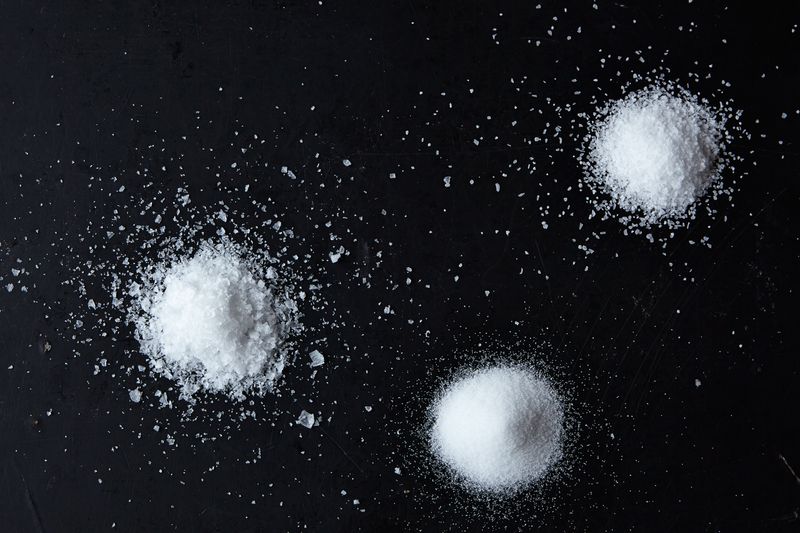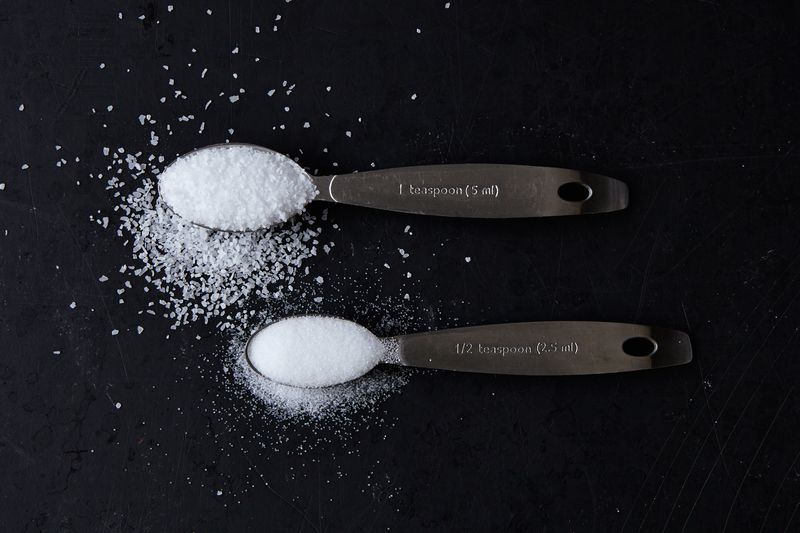I love cooking—and of course I use salt in my food, but I’ve never thought much about it beyond that. Hearing about salt therapy for the first time had me wondering how it could fit into my wellness routine. Salt therapy can mean everything from hanging out in a salt cave or basking in the glow of a salt lamp, but I chose salt yoga, where you stretch and practice your asanas in a room lined with Himalayan salt blocks. Now, cooking with Himalayan salt blocks is one thing, but using it as wallpaper? That was new to me. (As a food writer, my first thought was that I’d want to throw a rib-eye at it.)
Coming from Colorado, I’m no stranger to any number of out-there sounding health and wellness trends. (Cupping, chakra alignment, and goat yoga? Check, check, check.) So when I headed out for a weekend trip to Steamboat Springs—a city famous for its springs—I was intrigued by a spa that offers Salt Room Yoga. Would my experience doing yoga in a funky mountain ski town be any different from the get-it girl yoga at my local gym? When I discovered that there was a yoga class that fused salt and my interest in wellness, I was intrigued.

SO, WHAT IS SALT THERAPY?
There are two types, according to the Salt Therapy Association: speleotherapy, or “passive” salt therapy, which utilizes the salt air in a natural environment like salt caves; and halotherapy, or “active” salt therapy, which uses a machine called a halogenerator to disperse microscopic dry salt particles into the room. I’d imagine it’s similar to using a saline filled nebulizer, which some pulmonologists use in treatment.
In fact, the concept of using salt rooms to practice “respiratory hygiene” has been around for centuries, widely touted in Eastern Europe as a treatment for asthma, eczema, COPD (Chronic Obstructive Pulmonary Disease), allergies, and a slew of other ailments. Medical professionals have reported on various benefits, but proven effects still remain unclear. Today, there is some skepticism in the medical community on whether salt room therapy works or is just a placebo effect.
Dr. Norman Edelman, a senior scientific advisor to the American Lung Association, thinks there could be something to salt therapy. He believes inhaling salt particles can help people with lung diseases expel mucous more easily. “When fine salt particles are inhaled, they will fall on the airway linings and draw water into the airway, thinning the mucous and making it easier to raise, thus making people feel better,” he says. However, to date, there aren’t any clinical studies or scientific evidence to prove that salt therapy works, nor are there any medical guidelines for its use. Still, I was eager to see if spending some time in a salt-lined room would change me for the better.

by Catherine Lamb
WHAT HAPPENED WHEN I TRIED IT?
Waterside Day Spa has a salt room with a wall lined with 750 pounds of Himalayan salt tiles. The salt blocks are backlit, giving the room a warm, calming glow (all good when talking relaxation).
The salt that the halogenerator releases is made up of negatively charged ions, which are believed to be effective for treatment of chronic depression, like seasonal affective disorder (SAD). In my case, it was just a fun thing to do in the mountains, but still I was curious to see the outcome.
When I jumped on Yelp and TripAdvisor, visitors to Waterside’s salt room raved about how their winter colds disappeared and their adjustment to Steamboat’s 10,568-foot altitude (which can be challenging) was improved. Altitude sickness is a common affliction for those who visit Colorado, and even I experience headaches, dizziness, and nausea when I go from 5,280 feet (Denver’s altitude) to someplace high in the hills.
Waterside’s salt room can only accommodate four people, so my yoga class was really intimate. (Definitely more relaxing than my usual yoga class packed with about 40 sweaty yogis packed like sardines in a tiny room.) We moved through a series of poses like you’d expect at any yoga studio, only this time, my deep breathing wasn’t just a part of meditation and mindfulness, but about inhaling all the salt particles I could. I don’t suffer from any lung or skin issues, but any self-care that results in me feeling peaced out is okay in my book.

by Valerio Farris
AND… DID IT WORK?
In the end, the room and yoga were super-relaxing and I left feeling balanced and refreshed. I can’t say whether my lung quality or breathing were any different, but it was a unique way to practice yoga in a cool ski town. Coming from a family of doctors, I am pretty skeptical about the claims on halotherapy: I tend to go with what the studies say (or don’t say, in this case). I don’t know if the the merits of the therapy hold water, but doing yoga, deep breathing, and meditating is never a bad thing.
“If your goal is to find a new way to de-stress, salt caves can do the trick,” says Maureen George, a member of the Asthma and Allergy Foundation of America (AAFA)’s Medical Scientific Council. “They’re cool, quiet, and relaxing. If you’re looking for a natural way to treat your asthma, halotherapy is not what you’re looking for. It has not been rigorously studied, despite claims from ‘experts.’”
If anything, the class piqued my interest to learn more and experience it again. I wondered if my friend’s daughters who have asthma and eczema would see results, or if my cousin in New York City would benefit from the negatively charged ions in the air. I’ve even found a salt cave yoga class near home that I can try in the near future, and I’m pretty sure I’m going to drag my mom (who has a lung condition) along with me. For now though, I’m going to try my hand at making dinner. Those Himalayan salt-block bricks got me thinking about cooking with them, so I invested in one—and a steak.

by Briana Riddock

by Lindsay-Jean Hard
Would you give salt yoga a try? Let us know below!
(via Food52)






